
From January 16 (Wednesday), 2019 to February 24 (Sun), the Tokyo National Museum holds a special exhibition "A masterpiece beyond Mr. Masayoshi Honkaku" . Since the exhibition was held on 15th January, I will tell you the situation.
The face Makoto (literature) born in a famous man whose writing is home. In the era of Tang Dynasty (618 – 907) where he played an active part, in the history of China, the time when the writing method reached the climax.
Following Wang Yoshiyuki (Ogushi), which was honored as "Book Selection" during the Higashin Jin period (317-420), in the Tang Dynasty, the foundation of the Scribble by Establishment of Goodwill was established by the Three Large House. And while Mr. Shin Shin inherited the tradition of the three major landowners, he created a unique writing method called "face method".
In this exhibition, a number of valuable name books such as "The title of the priest's niece" of Mr. Masashige who gathers a great deal of attention as Japan's first public exhibition are displayed. Focusing mainly on the Tang Dynasty where the writing method prominently progressed, we will approach the essence of the person and book of Mr. Shin Han. Also, I will examine the influence of their writing method on future generations and Japan, and introduce the role played by the Tang Dynasty's book.
Exhibition scenery introduction
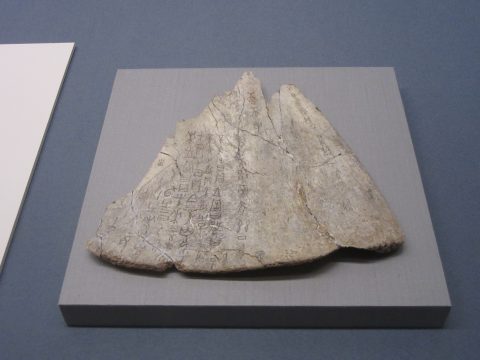
Bone text of the Yin era (the 13th century before), held in the Calligraphy Museum in Taito Ward, Tokyo. The oldest existing character. Everything started from here
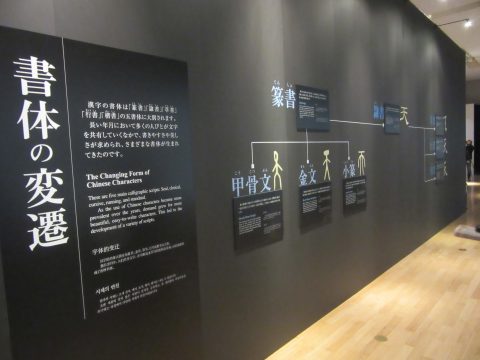
Introduction of font transitions in an easy-to-understand manner. A letter is born by the unification of letters by the Emperor of Qin and eventually develops into a letter, a script, etc.
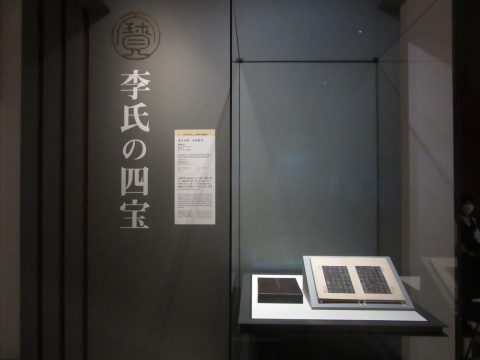
"Mr. Lee's Four Treasures" Lee Mun-kyo (Historical Resource) gathered successive arcs against the backdrop of rich economic power. In this exhibition, all four treasures of the uncensored are displayed
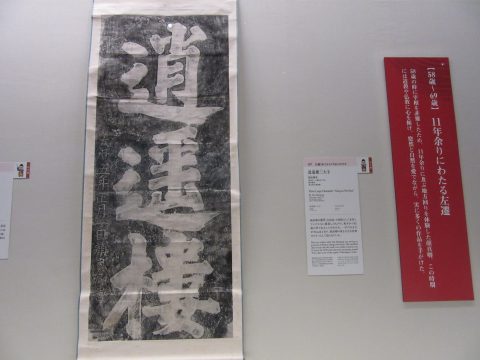
"Three Kingdoms of the Royal Castle" by Mr. Masanaka Tang Dynasty · 5th year (770) (Collection of the Tokyo National Museum). In this exhibition you can meet various kinds of fonts, but the brilliant beauty of Kushito draws particular attention
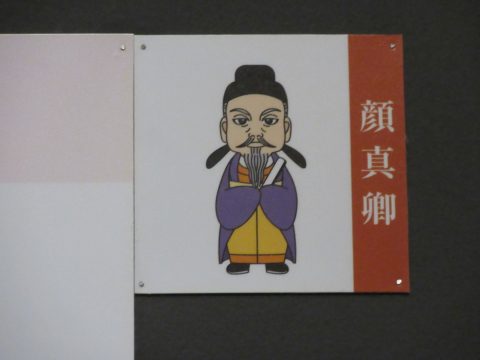
This is Makoto Face. Other than that, Sha Seinan, Oyoungju, Yoshiyoshi Suzuki · · · In addition to the introduction of the work unique figure characters appear
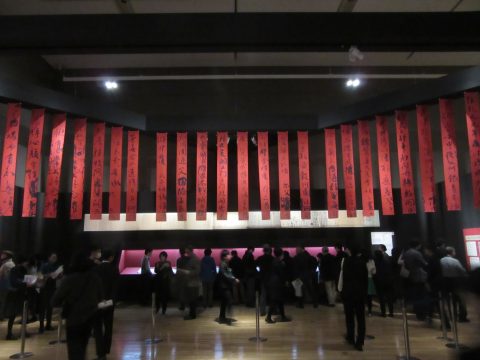
Space where "Japan's first prize publication (Sadotsu Bunko)" was exhibited in Japan. It has a mysterious atmosphere like a ritual

In Chapter 4, we will examine the influence that the Tang Dynasty gave to Japan. This is "Mr. Shiraishi Poems – Hiroshimen Books" by Fujiwara Yusakui Fujihara Juzentai Heian era · Hiroshimi 2nd year (1018) (Collection of the Tokyo National Museum). Ryuzo learned the book of Yoshiyuki and others, but its style is mellow, giving a gentle impression
This exhibition consists of six chapters.
Chapter 1 Transition of typeface
Chapter 2 Tang Dynasty Written by Anheshi
Chapter 3 Activities of the Tang Dynasty Mr. Shin Sakurai
Chapter IV Acceptance of the Tang Dynasty in Japan
Chapter 5 Evaluation of Facial Mr. Son during Song Dynasty
Chapter VI Effects on future generations
Although there may be some people who feel painfully attached to the exhibition of "books", there are abundant panel commentaries, characters, exhibition spaces (which are color-coded and easy to understand) and stylish taste, and playfulness unique to "Tohaku" It is full and it is structured to learn the history of the book naturally while enjoying it.
Especially the work of Mr. Shin Sang who created his own writing method called "face method" is characterized by powerful and friendly. A number of passionate books expressing emotions in a straight way exactly crosses the times and evokes anger, sorrow and various emotions in our hearts.
Exhibition work introduction
Nine Nyuomiya Kozumi inscription – Inuyashimoto – Ooyo pencil
Tang Dynasty · Pagan view 6th year (632)
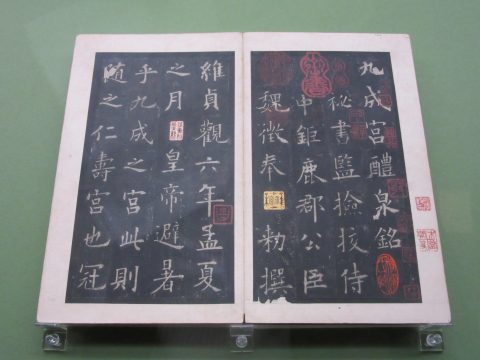
A masterpiece known as "the best masterpiece of Scripture" .
It is a monument to commemorate the sweet fountain springing up in a corner of the Imperial Palace when the Tang Dynasty was taken to the Nine Narratives, due to the hand of one of the three "Triple Owners" in Tang. Although it was prized as an example of Koshi from the long ago, damage has been intense due to weathering for many years, this "Inuyashimoto" supplements damage and complete sentences.
"Kiwiko" is an image that is "exactly, seriously", but in this work there is delicacy and softness felt in the dignity that unexpectedly the spine grows.
Autobiote (jijiyouji) Homepage
Tang Dynasty and the 12th year of the Old City (777) National Palace Museum of Taipei

This work is published for the first time in Japan. A handwritten acquaintance with Masami Hako, who opened the eyes with the essence of the handwriting was good at transfigurable brush strokes called "crazy". It seems that there are not many existing works because watermelon drank liquor, took a brush, wrote the temple walls, tableware, kimono etc. randomly. This is my valuable example.
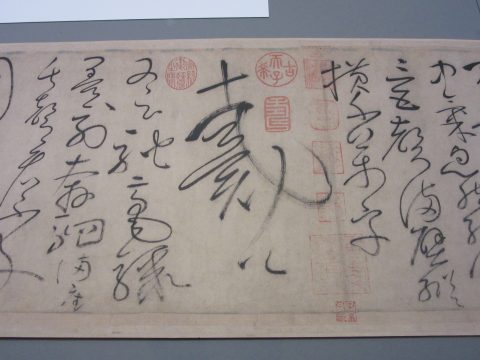
As the brush goes farther, the font is disarrayed by disorder, and finally a book of watches that shows the ruggedness of one character on a line. But no matter how unscrupulous it is, it will not fail. What is written with an exquisite sparse refinement will be conveyed to the amateur. Giant drinker genius, walnut … I would like to meet you, I do not want to see it (lol)
The priest 's writing paper face true writing brush
Tang Dynasty · Yuan dry year first year (758) Taipei National Palace Museum Collection
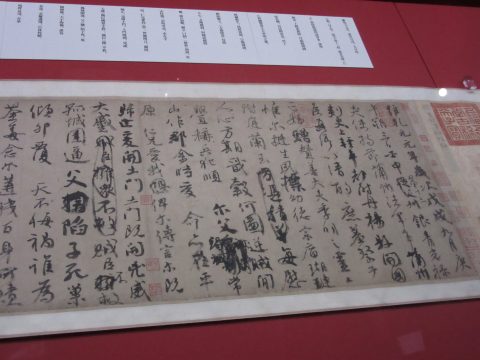
This is also the first public exhibition in Japan. This time it is a work that fulfilled "Miracles come to Japan".
Face Makoto who jumped out to the stage stage with its powerful emotional expression after Wang Fuyuyu's writing style which blew away the first world declined. Here, the overwhelming feeling that can be said as a dazzling face and overwhelming emotions are spelled out.
"Disaster of Anshin" broke out in 755. His face Mr. Sakura made a great contribution to the rebellion of the turbulence with a grudge, but the face of the crown and the youngest face of the crown are the victims of the turbulence. "The priest-oriented paper draft" is a draft of a sentence that Mr. Shin Sang retorted the deceased face.
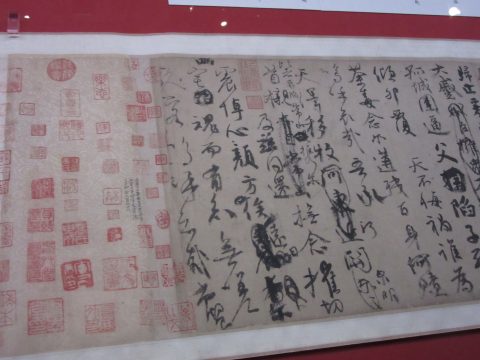
Even at the beginning of a typographical style, emotions are high as I spell my feelings, the brush strokes in the length and breadth, the page is full of anger and sorrow. At the end, my eyes may have been hazy with tears ….
"When you come here, you will feel like the aura of the face Makoto 's passion beyond the form"
The word of Mr. Jun Tomita (Director of the Tokyo National Museum's Academy Planning Division) who explained the exhibition comment this time. This work is rarely borrowed out of the country, and in Japan it is a masterpiece in masterpieces that are only exhibited once in a few years. By all means directly with its eyes, please feel the enthusiasm of the face Makoto with whole body!
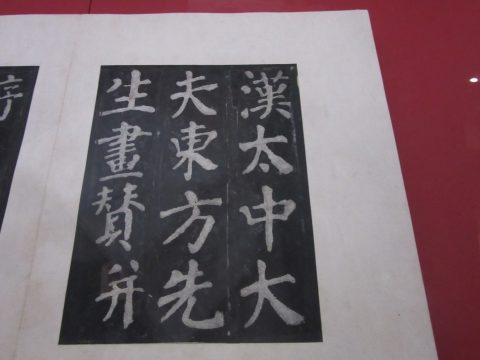
Toho Saku praised inscription Face True Penguin Tang Dynasty / Tenbu 13 years (754) Tokyo · Mitsui Memorial Museum Collection
"Book, heartfelt" and the Yangzi cloud (53 BC to 18 AD) said it was said.
Before the advent of Wang Yoshiyuki and others, the book was not just a means of communicating information. It was being inferred that it was a means to make people and people pass through their hearts and thoughts.
A man's book written with grief and shouts of humans, various emotions engraved. Why not try it once by all means?
Summary
| Exhibition name | Special exhibition "A masterpiece beyond Wang Xiuyin" |
| A session | Wednesday, January 16, 2019 – February 24 (Sun)
9: 30 ~ 17: 00 (Admission is until 30 minutes before closing) |
| closing day | On Monday (however, February 11 (Monday · Holiday) will be open, next Tuesday (Tue) will be closed) |
| Venue | Tokyo National Museum Heiseikan (Ueno Park) |
| Admission fee | General 1,600 yen (1,300 yen), college students 1,200 yen (900 yen), high school students 900 yen (600 yen)
Junior high school student free * In parentheses, group fee of 20 people or more ※ One who has a handicapped Person and one carer is free |
| Official site | https://ganshinkei.jp/ |


